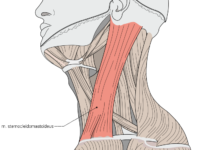How To Get Flexible Fast - A Detailed Guide
Many people desire flexibility, but somehow never end up gaining the range of motion that they want. Even with a detailed and structured stretching routine, there are a lot of things that can hold you back from making progress.
But how do you increase your flexibility fast without spending hours of stretching & what are common mistakes people make when trying to improve their flexibility?
Common Mistakes
Intensity is too high
One of the most common mistakes when stretching is to overdo the stretch by moving into it until you feel pain.
This usually happens if you have too much motivation to achieve your goal fast. So even though you want to become flexible quickly you need to stop rushing!
Not only does this mistake lead to stagnation of your range of motion, but even worse it can cause injury in your muscle tissue.

When stretching you should still feel a slight pull at the muscle that you're stretching but be careful to avoid intense pain.

No Relaxation
Another common mistake is forgetting that stretching is all about relaxation. If you go into a stretch without calming down your entire body it is likely that the muscle that you stretch or its antagonist will start contracting.
Therefore the resistance is going to be a lot higher, making it even harder for you to do the stretching exercises.
To get calm it helps to stretch in an environment whereas you don't feel stressed, which is why yoga can often be superior over stretching in a loud and busy gym. But even turning on music that calms you down rather than hyping you up you will already start to progress faster.
Lack of Reason
If you don't know why exactly you are stretching chances are pretty low that you will not stick to your routine. Also sb. telling you that you need to get more flexible is definitely not a strong enough reason to stick to a stretching routine on a consistent basis.
Think about the desired benefits that you want every time before you start stretching to take it more serious.
Not being specific
Not being specific is often related to the mistake above. You have to know which areas you want to put emphasis on whether it is your hip flexors, upper body or any other muscle group.
Although it is possible to work on your entire body at the same time, it is more likely that you succeed if you keep your stretches more specific.
The Best Techniques
During the past years more and more stretching techniques have been developed. While dynamic stretches & static stretches are the most common ones right now, there are far more techniques that you might consider doing.
I'm not going to give you an entire list of stretching methods but below you will find a method that has a lot of potentials to increase your flexibility.
PNF & Isometric Stretching
PNF stretching is relatively new, and also slightly more complex than dynamic and static stretching. But research has shown, that it is also the most effective way of flexibility training, which is why you should integrate it into your training programs.

So how does it work?
- Go into a position that stretches the muscle you are about to stretch (similar to static stretching)
- Contract the muscle group that you are stretching for 5-6 seconds. It is important that you are not moving the body part that you are stretching, which is why you might need a partner or something to prevent you from moving.
- Relax the contracted muscle and go into the stretch for 20-30sec. It is important to not overstretch in this phase, which means that you shouldn't feel pain but rather a pull around the muscle. Take about 30 seconds of a break and then switch sides or repeat the stretch for 2-4 times for optimal results.
The only downside to this stretching method is that some stretches may require a partner or a bit of creativity to be able to hold the body part in place during the contraction period.
Other than that there are a lot of studies which have shown, that this type of stretching is by far the most efficient method right now.
Also, it doesn't mean that you should stop doing dynamic or static stretching. Each of the techniques has its advantages & disadvantages.
- Dynamic Stretching For Warm-up
In my comparison article between dynamic & static stretching I've already pointed out, that dynamic stretching is better for a warm-up than any other stretching method.
Why?
- Functional Movements
- Imitates the exercise
- Activates Neuromuscular Connection
- Increases Flexibility/Range of Motion
- Increases Bloodflow & Heart Rate


Therefore it makes a lot of sense to do dynamic stretching every time during your warm-up as it also warms you up at the same time.
Furthermore, dynamic stretching often doesn't even feel like stretching which is why it is such a good activity to increase your flexibility.
Static or PNF stretching, on the other hand, are going to work best after your training.
Scheduling (How Often & What)
If you want to progress fast it is important to set yourself a fixed stretching schedule. Often it makes sense to combine it with strength training in advance if you already have the habit of doing regular exercise.
Try to integrate daily stretching into your schedule to make results the fastest. If you are stretching less than 2 times a week it is unlikely for you to gain flexibility fast.
On the other hand, stretching 4-5 times will already get you quite far.

Besides knowing how often you should stretch it is equally important to know what to stretch.
Think about the exact muscle groups that you want to stretch and then do enough research to figure out the most effective exercises to increase the mobility of that muscle group.
As mentioned above it makes sense to integrate dynamic stretching to your warm-up as it is a "sneaky way" of stretching while warming-up.
Another good hack to increase your flexibility is to do every exercise in the gym with a full range of motion. If you don't walk your muscles through the entire range of motion possible when doing a physical activity you are going to get stiff around your body. On the other hand doing functional exercise through the entire range of motion (deep squats, pull-ups all the way up, etc.) you will automatically gain some flexibility.
Follow these steps to create your own stretching schedule:
- Write down your Goal
- Write down the most important muscle groups to stretch
- Write down & look for the exercises & stretches
- Take out 2-3 stretches for each muscle group on your list
This is all you need to improve flexibility fast, although there are more factors that I mentioned above that matter. (Stretching method, frequency, amount of relaxation etc.)
Bonus
In case you want to take it even a step further or don't want to do all the effort of creating a routine you can look for a stretching program.
The program that I followed to unlock my splits in a short period of time is called "Hyperbolic Stretching". It is designed for lower body flexibility & uses some more advanced stretching methods.
So if you're interested you can read my review of the program!
Conclusion
If you follow these steps you will get there eventually. But don't get frustrated if it takes a little bit more time than anticipated. Due to genetics and your personal starting point, it can vary how long you are going to need.
Feel free to leave a comment below if any unanswered questions remain! Also remember to share this article with your friends if you found it helpful as it helps me to produce higher quality content!


